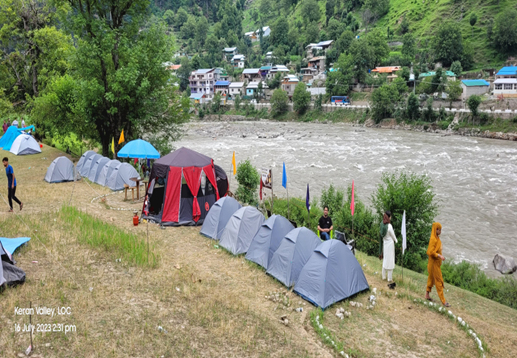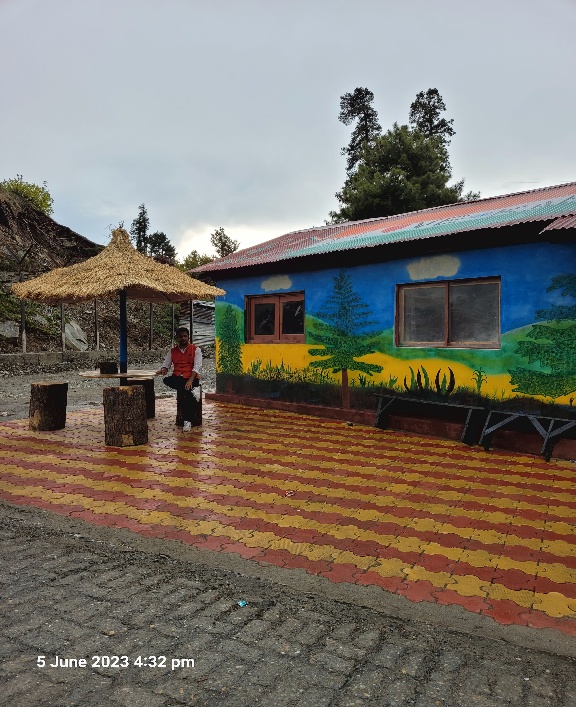North Kashmir’s border tourism is more than just an industry—it’s a movement bringing life, hope, and opportunity to remote communities.
You see, not long ago, the idea of tourism flourishing along the border areas of North Kashmir was nothing more than a distant dream. For decades, places like Gurez, Keran, and Teetwal were known for their strategic importance rather than their scenic beauty. The stunning valleys, untouched rivers, and towering peaks existed in silence, far from the footfall of travelers. These were lands where stories of struggle outnumbered stories of prosperity, where the idea of tourism was overshadowed by security concerns. But that is no longer the case. Today, these very border areas have become beacons of success, proving that with resilience, vision, and the determination of the local communities, even the most unexpected places can transform into thriving tourism destinations. So, how did this happen? Let me take you through some remarkable stories that have rewritten the narrative of North Kashmir’s borders.

It all began with a handful of individuals who saw potential where others saw limitations. Take, for instance, Bashir Ahmad from Gurez. A shepherd for most of his life, Bashir had spent years wandering the high-altitude meadows with his livestock. He knew every trail, every hidden lake, and every ancient story tied to the land. When the government announced initiatives to boost border tourism, he saw an opportunity. Instead of migrating to Srinagar or Delhi in search of work, he turned his modest home into a homestay for travelers.
At first, the response was slow. Who would want to travel to Gurez, a place so remote that even phone signals struggled to reach? But then, something changed. Word began to spread—about the emerald-green Kishanganga River, the breathtaking Habba Khatoon peak, and the untouched landscapes that felt like a paradise frozen in time. Bashir’s homestay, with its traditional Kashmiri architecture and home-cooked meals, became a sought-after spot. Today, he is not only a successful entrepreneur but also an ambassador of his homeland, welcoming guests from across the country who come to experience the untouched beauty of Gurez.
Then there’s the story of young Zahid Ahmad from Keran. For most of his life, Keran had been a place people spoke of in hushed tones—remote, on the edge of the Line of Control, a place where families had been divided by history. But Zahid refused to let his village be known only for its past. With courage and a sense of purpose, he set up the first-ever restaurant in his village—a simple yet beautiful space on the banks of the Kishanganga, where travelers could sit, sip kehwa, and soak in the mesmerizing view of the river flowing between India and Pakistan.
At first, his idea was met with skepticism. “Who will come all the way here for a cup of tea?” the villagers asked. But he knew better. He wasn’t just offering tea and snacks; he was offering an experience. His restaurant became a cultural hub where travelers could listen to traditional Kashmiri & Pahari music, learn about the history of Keran, and watch the sun set over the river that had, for decades, been a silent spectator to the area’s history. Soon, what started as a small restaurant turned into a thriving business, inspiring others in his village to take up similar ventures. Today, Zahid’s success has encouraged more young people to step into the tourism industry, changing lives one cup of kehwa at a time.
And then, there’s the grand success story of Teetwal. For years, it remained a forgotten land, its history buried under layers of conflict and neglect. But with the revival of the Sharda Peeth corridor, everything changed. Suddenly, Teetwal was no longer just another border village; it became a place of spiritual and historical significance. Pilgrims, historians, and travelers alike began visiting, eager to walk in the footsteps of those who had once called this place home. The locals, who had long felt invisible, found themselves at the heart of this transformation. Guesthouses were set up, local artisans started selling handcrafted souvenirs, and the old wooden bridges that once carried only memories now carried the footsteps of eager tourists.

The return of visitors brought not just economic prosperity but a sense of pride and recognition to the people of Teetwal. But the real magic of border tourism in North Kashmir lies not just in the landscapes or historical sites—it lies in the people. It lies in the young men who trained to become trekking guides, leading travelers through forgotten trails and secret valleys. It lies in the elderly women who turned their ancestral homes into guesthouses, offering visitors a taste of authentic Kashmiri life. It lies in the local entrepreneurs who set up adventure camps, handcrafted souvenir stalls, and small eateries serving wazwan by the riverbanks.
Today, the once-silent roads of North Kashmir hum with the voices of travelers, the laughter of children playing by the rivers, and the songs of local musicians who now perform for an audience wider than ever before. The fear that once kept people away has been replaced by curiosity and admiration. The valleys that once echoed only with the sound of distant gunfire now echo with the excited chatter of tourists marveling at the beauty of places they never knew existed. And the people? They are no longer just inhabitants of border villages; they are the pioneers of a new movement, proving that even in the most unexpected corners, tourism can thrive, communities can prosper, and history can be rewritten.
This is just the beginning. The borders may remain, but the barriers have faded. North Kashmir is no longer just a land of stories—it is a land of success, of tourism, of hope. And if you ever find yourself standing on the banks of the Kishanganga, watching the mountains bathed in golden light, you’ll understand why the world is finally looking at North Kashmir not as a boundary, but as a destination.